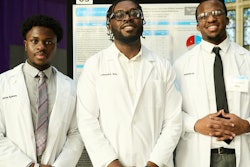Immediately after the shooting that later claimed the life of Shalita Middleton, 17, Delaware State University officials utilized many of the lessons learned from the Virginia Tech massacre, and responded by quickly locking down the campus and notifying students and staff. But what do campuses do to prevent the violence in the first place?
“On campus, the best approach to violence prevention is probably encouraging bystander intervention. This teaches third parties to observe, identify and intervene when they see the kind of behavior that could lead to violence or injury,” says Theresa Kersch, chairperson of the American College Health Association’s (ACHA) Campus Violence Coalition (CVC).
Much of the research on bystander intervention grew out of attempts to reduce date rape and sexual harassment. Earlier approaches to prevent violence against women tended to alienate students by characterizing all women and men as potential victims or perpetrators. Bystander intervention tries to engage all students as possible protectors who could help prevent situations from escalating, or aid victims after an incident. It starts with creating a campus culture where date rape or sexual harassment is unacceptable. Both men and women are taught to identify and challenge attitudes and behaviors that promote or condone sexist behavior, such as showing pornographic movies in dormitories.
“We’ve had the most success with alcohol abuse. Most students now agree that drunken driving is unacceptable, and know the interventions like taking away the keys or offering a ride home,” says Dr. Eric Buhi, assistant professor of community and family health at University of South Florida’s College of Public Health. “For date rape, it could be as simple as saying, ‘Hey, let’s go get something to eat’ to give a drunken girl a chance to reconsider going upstairs with some guy during a frat party.”
One important resource on prevention is the ACHA’s Campus Violence White Paper. Written by Dr. Joetta Carr, the former chair of the CVC, it addresses sexual violence, hate crimes, hazing, celebratory violence, suicide and attempted suicide. However, even though it does mention murder and aggravated assault, it is virtually silent about the type of incident haunting DSU.
When DSU shooting suspect Loyer Braden was arrested, he said that he was sorry, but that he was just unable to walk away from the fact that during an earlier fight someone had spit blood on him. The shooting didn’t seem to involve alcohol, sexism or a prior mental illness. It may have been caused by the toxic street mentality that claims the lives of so many Black and Hispanic youth.
“The DSU shooting should be awake up call to expand our violence interventions to meet the needs of students from poorer communities,” says Buhi. “The same techniques that reduce sexual assault might have worked here if a bystander at the original argument had said, ‘Hey guys, this campus doesn’t believe in settling things with fistfights or violence, let’s go home before someone gets hurt or thrown out.’”
DSU spokesman Carlos Holmes notes that it was the alleged suspect’s possession of a gun that “turned a fight into a tragedy.” The institution stresses during freshman orientation a zero tolerance for weapons, and it is usually students who help enforce it by letting school officials know if someone has a firearm, he said.
“The shooting has left us thinking about what additional steps we can take,” Holmes says. “One issues is that all these students involved had been on campus for less than three weeks so we really didn’t know if they had issues.
“In terms of conflict resolution, the policy that has the greatest possibilities is an idea we put into place last year which is increased faculty mentoring in the residence halls. We are actively encouraging more faculty members to live in the dorms with the students who are still very young men and women who need to learn how to get along with different kinds of people.”
–Paul Ruffins
There are currently 0 comments on this story.
Click here to post a comment
© Copyright 2005 by DiverseEducation.com


















